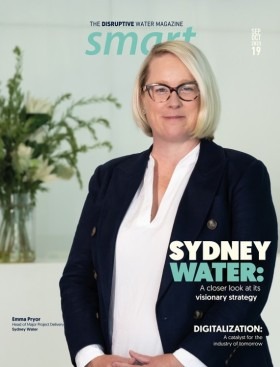Innovative system for separation of monovalent salts from seawater brine for beneficial use

NEOM is a new region being built from the ground up in the Northwest of Saudi Arabia and a key component of Saudi Arabia's Vision 2030. Envisioned as a future Special Economic Zone, NEOM will be a living laboratory for solutions that address global issues.
One of NEOM's primary goals will be to develop and implement at-scale solutions for water scarcity and pollution, minimizing water costs and eradicating waste. ENOWA, the water and energy company of NEOM, is leading this charge and has brought together world-leading experts within the energy and water space to lead infrastructure development while investing in and testing ground-breaking technology.
ENOWA and the Water Innovation Center
ENOWA Water is designing infrastructure utilizing forward-thinking technologies and in collaboration with leading international organizations. The water infrastructure is being built on renewable energy technology and circular economy principles where seawater desalination will be integrated with brine processing and 100% wastewater recycling and recovery of resources will achieve zero-liquid discharge (ZLD) with no environmental runoff by 2030.
ENOWA Water is designing infrastructure utilizing forward-thinking technologies in collaboration with leading international organizations
To support these ambitious targets, ENOWA has established the Water Innovation Center (WIC), dedicated to applied research in seawater desalination, brine mining, conveyance, water recycling and district cooling. WIC has already formalized strategic partnerships with several world-leading research institutions and centres of industry expertise, including The University of California Los Angeles (UCLA), Texas A&M University and Pennsylvania State University and HACH in the US, King Abdullah University of Science and Technology (KAUST) in Saudi Arabia; Public Utility Board of Singapore, Hydranautics in Japan and many others. These collaborations aim to develop a unique ecosystem of technologies and equipment that support NEOM’s utility needs while also benefiting wider global applications, creating an impetus for water industry growth and sustainability.
Membrane system for selective mineral extraction
One of WIC’s latest technological achievements is the development of a system for low-cost harvesting of concentrated, high-purity minerals from seawater.
Current conventional seawater reverse osmosis (SWRO) systems can produce only desalinated water and mixed brine of no value. The WIC system produces both desalinated water and simultaneously extracts a valuable mineral.
The Water Innovation Center has developed a system for low-cost harvesting of concentrated, high-purity minerals from seawater
The process uses innovative SWRO membranes of standard commoditized size, with imbedded chemical ingredients in the salt separation layer which make the membrane semipermeable for water and the mineral targeted for recovery. As seawater passes through, the membrane permeate captures 99% of the targeted mineral, resulting in less than 1% loss in the SWRO brine.
A subsequent two-stage pass through a brackish RO membrane (BWRO) separates the selected mineral from the membrane permeate. The first stage fully separates the mineral from the freshwater permeates and releases over 99% of the mineral into the BWRO brine. The second stage of the BWRO system concentrates the brine to a mineral content of 99.5% or more – over 20 times its concentration in seawater. The mineral brine can then be used in liquid form or crystalized into a high-purity commercial product.
This technology enables the production of both desalinated water and valuable mineral extraction with no added complexity, enabling the valorization of seawater brine at no additional cost or energy expenditure.
The presented mineral selection system is being implemented at the WIC pilot testing facility at the Duba Desalination Plant in Saudi Arabia. The pilot program is focused on the separation, concentration and crystallization of potassium chloride from seawater. Potassium chloride is a valuable fertilizer with high market value. As seen in the figure above, all process separation components are membrane-based. The separation of potassium chloride from seawater uses SWRO membrane, the separation of potassium chloride from the SWRO permeate requires conventional BWRO elements, the concentration of the separated potassium chloride is completed by osmotically--assisted reverse osmosis membranes (OARO), and the crystallization of the potassium chloride is accomplished by specialized forward osmosis driven crystallization membranes.
As seawater passes through, the membrane permeate captures 99% of the targeted mineral, resulting in less than 1% loss in the SWRO brine
Compared with thermal separation and evaporation methods, the use of membrane-based technologies to separate, concentrate and crystalize the potassium chloride has been shown to reduce the capital cost and energy required for the production of potassium chloride by over 50%. Therefore, the technology presented in this article is a breakthrough in the field of brine mining and valorization.
While potassium chloride is the first mineral the WIC is presently focused on, ENOWA is developing similar selective membranes to target other valuable minerals such as lithium and rubidium salts. In all these cases, a special mineral selective membrane would be developed.



